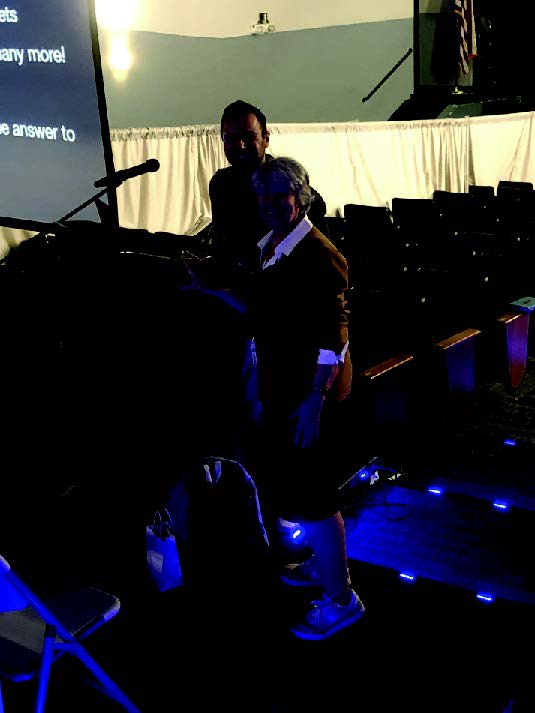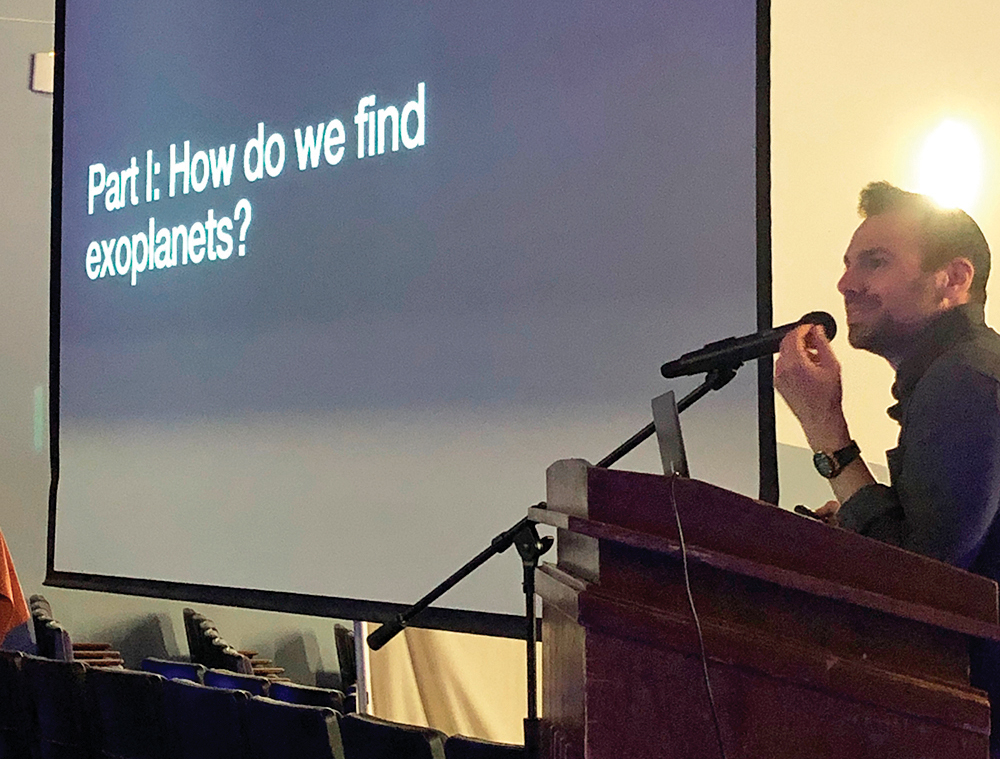
Last month, SAR High School students and faculty were captivated and inspired by a presentation on Exoplanets, given by SAR alum and astrophysicist Yarone Tokayer. Science teacher Ms. Tobie Brandriss invited Mr. Tokayer to speak using his extensive knowledge and expertise of astronomy and astrophysics to explain how Exoplanets form and why it is sometimes so difficult to detect them. He described this technical topic clearly and enthusiastically, conveying his passion and excitement for the field, and using wonderful visual aids that enabled the students to really understand his ideas. Ms. Brandriss felt it would be wonderful for the students to hear from an SAR alum and to picture how they themselves may possibly become experts in a field of science someday.
Mr. Tokayer introduced his topic, “Are we alone? The new search for other worlds and habitable planets beyond the Solar System,” by saying, “Over the past 15 years, groundbreaking observations have unveiled a myriad of planets outside our Solar System, tantalizing us with the possibility of other habitable worlds. But what is a planet? How many are there? How did the Earth form? What makes a planet habitable, and how many planets, like Earth, may harbor life? It’s hard to believe that we know much more about galaxies that are millions and billions of light years away than we do about the small planets that are in the neighborhood of our own solar system. This talk will give a window into the burgeoning field of exoplanets, an active and exciting area of astrophysics. We’ll delve into the clever techniques used to detect planets, the mysteries of planet formation, and ponder the uniqueness of our own ‘pale blue dot.’”

Over 70 students and faculty attended during their lunch period—totally voluntarily in their free time. Mr. Tokayer explained to them what scientists have learned about exoplanets so far, and what they hope to learn.
Mr. Yarone Tokayer graduated from SAR High School in 2009 and returned as a teacher in 2014. He is currently pursuing a PhD in physics from Yale University, where he studies cosmology and high energy astrophysics. He was a true model of an SAR graduate who is pursuing his passion in the field of science.
After the presentation, at the suggestion of physics teacher Mr. Ron Zamir, many students wrote to Mr. Tokayer to thank him for his enlightening talk and asking him questions that his talk sparked in their minds.
Dahlia S-H wrote, “Your discussion on the different detection methods, including the Transit Method and Doppler Shift, was fascinating to me. It was fascinating to learn how these methods allow scientists to detect planets orbiting distant stars despite their diminutive size and distance.”
Asher W. asked: “I think what I found most fascinating was the transition method for finding exoplanets; it is simply such an ingenuous usage of the science available to us, one that I personally don’t think I ever could have thought of.”

Students were full of questions like: “Assuming that there is life out there, why do we think they need a planet similar to earth?” “How do scientists ensure the accuracy of the visual representations of the universe and the galaxies within it?” “Are pictures of the universe and galaxies accurate and how do we know? How do we name new planets?”
One student specifically asked: “As an Orthodox Jew, how do you think this all fits into religion?” Mr. Tokayer graciously took the time to write back to the students, answering many of their questions and encouraging their desire to know more.
Mr. Tokayer answered, “I am not a religious scholar or authority, nor do I have an expertise in religious thought. To me there is something deeply religious about the study of nature. So much of life is trying to understand the world we find ourselves in, and it’s pretty wild that so much of it is accessible to us. If, as Maimonides says, the foundation of all is to ‘know,’ and understand God to the best of our ability, then the universe and its laws is one of our best access points.”
The students and faculty expressed profound gratitude to Mr. Tokayer for opening their eyes to the burgeoning field of astrophysics.












